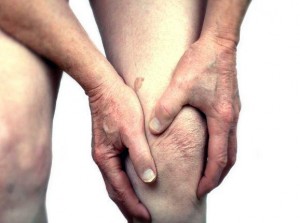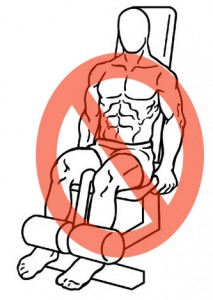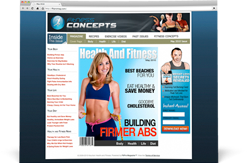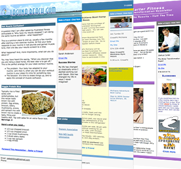Tips for Arthritis that will Boost your Business
Posted by Steve Hochman on Fri. Feb. 21st, 2014
Guest Post by Cody Sipe, PhD
If you are going to grow your business and learn how to be a personal trainer with the exploding population of older adults then you need to quickly learn how to deal with osteoarthritis. It is the most prevalent chronic condition among older adults and by far the most common complaint that we get from clients. Arthritis has a major impact on functional abilities and is one of the primary causes of disability.
It is also a painful condition that takes a mental and emotional toll on those suffering from it. Just think about constantly having to take NSAIDs (non-steroidal anti-inflammatory drugs) or other pain killers because your joints hurt all the time. Pain is a downer that can suck the joy out of the things we love to do. Traveling. Playing with grandchildren. Taking a walk with a spouse or friend. Hiking. Almost anything.

Frankly, I think it is a major pain in the butt (or the knees to be exact). And I know because I already have arthritis in my knees even though I am only in my early 40’s. If I play a game of pickup basketball…watch out. I know that I probably won’t be able to get off the toilet the next day because my knees hurt so badly. For our clients just daily activities can cause major arthritic pain. The joints that are most commonly affected include the knees, hips and spine.
It is also one of the major reasons older adults are fearful of exercise. They think that since daily activities bother their affected joints then exercise will make it worse. In their minds this is confirmed when they go out and do something active and they have to “pay for it” with pain and inflammation the next day or two. In actuality regular exercise eases joint pain and increases function. But most older adults don’t understand that so they tend to avoid exercise altogether.
If you’re getting ready to take your personal trainer certificate and don’t know how to train mature clients with arthritis effectively then you won’t keep them. They will leave and your business will suffer!
Recognized recommendations for arthritis include:
· Using low or no-impact cardiovascular exercise modalities such as swimming, biking or walking
· Avoiding high-impact activities such as skiing and running
· Performing resistance exercise using higher reps and lower weight for the musculature surrounding the affected joints
· Extended warm-up to make sure joints are well-lubricated before exercise (which may include a hot shower beforehand)
· Weight loss if the individual is overweight or obese
· Use of NSAID’s to manage pain and swelling
· Avoiding exercise if joint during periods of active inflammation (joint is red, hot and swollen)
Tips for the Trainer
Appease their Fears and Concerns: The fear of pain and injury is often still present even for the ones who decide to hire a personal trainer. They may doubt their own abilities or may have had negative experiences with exercise previously. If they are scared then they are not going to give you a good effort and thus they are not going to get the results they are after. Let them know what to expect with an exercise; how it might affect their arthritic joints; and how you will modify the exercise if it bothers them too much.
For new exercisers it can be very helpful to let them know how to warm-up properly and what to do post-exercise to minimize pain and discomfort. Communicating effectively will build their trust and confidence in you as a trainer and increase your credibility as an authority while reducing their stress about the potential dangers of exercising.
Decrease Depth: I find that decreasing range of motion of exercise movements can really help clients perform them successfully while minimizing discomfort. On movements such as squats and lunges this means decreasing the depth at which they work or decreasing the height of their step. For some there is a critical range of motion beyond which their pain or discomfort increases significantly. This is true for me. I have learned that performing leg movements to about 75 degrees of knee flexion is about all I can tolerate and still work at heavier loads.
Once I go beyond that range it becomes very uncomfortable for the day or two after the exercise session. Determining an appropriate range of motion for your client is often a process of trial and error which includes diligence on the trainer’s part to ask the right questions regarding post-exercise discomfort and discernment to know when an exercise needs to be modified or removed.
Be Methodical: Therefore, do not implement multiple changes simultaneously because you will not know which change was problematic for the client or it was the sum of all changes that caused them discomfort. For example, you increase the load on a lunge (by having them hold dumbbells) and increase the depth of their lunge and have them step onto a balance pad all in one session. The client comes back saying that their knees really killed them the next day.
Since you made three changes in one session you really don’t know if the issue was increased loading, increased range of motion, decreased stability or a combination of 2 or more of these that caused them so much discomfort. Manipulate the most important variable first and once that has shown to be tolerable then manipulate the second variable and so forth.

Avoid or Limit Leg Extension: If there is one particular exercise that I have found to be the most problematic for older adults with knee arthritis it is the leg extension. In fact, I seldom use it anymore for older clients simply because there are other closed-chain options for leg strengthening that I like better and that seems to cause less discomfort (see the Functional Aging Specialist Certification). However, if you have a specific reason for including it as part of a program then I recommend considering the following tips.
If you have a leg extension with adjustable range of motion limitations then you can have the client only perform the last 20 degrees of extension which is called terminal extension (similar to short arc quads used by physical therapists). Definitely do not exceed 90 degrees of motion but my suggestion is to only perform 70-80 degrees of motion since it also seems that the greater the range of motion the greater the potential for irritation and discomfort. However, working through a pain-free range of motion is critical so through some trial and error you may find that a client can only tolerate 50 or 60 degrees of motion. If that is the case then keep them in that pain-free range.
Lower Ramp on Elliptical Trainer: Since high-impact cardiovascular activities can be problematic and should be avoided I prefer to use either the Nustep (a recumbent stepper) or an elliptical trainer depending on their level of fitness and severity of arthritis. On the elliptical trainer I have found that lowering the ramp is a critical modification that increases their capabilities and decreases discomfort significantly. Out of 20 incline settings (for example) I would start them out at a 4-5 incline. This reduces the vertical step height and makes the motion more akin to cross country skiing.
Mature adults can and should exercise regularly to decrease the pain and discomfort from osteoarthritis while increasing their functional abilities. This will help them to better enjoy the things that they love to do and they may even be able to get back into activities that they stopped doing because of their arthritis.
Knowing how to communicate with and train clients with arthritis will be a critical component of your success with the exploding population of aging Boomers. Interested in learning more? The personal training certificate called the Functional Aging Specialist Certification will help you grow your business by teaching you a functional approach to training mature clients that is safe, effective and fun.
Posted in Blog, Boot Camp Business, Fitness Business by |

